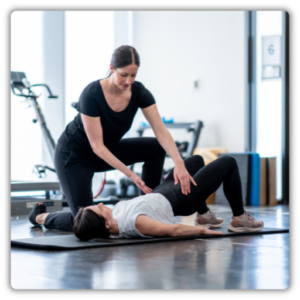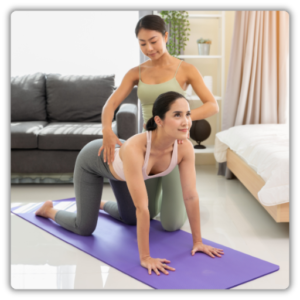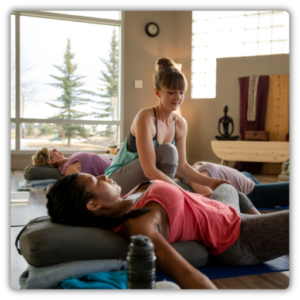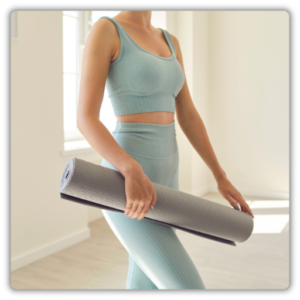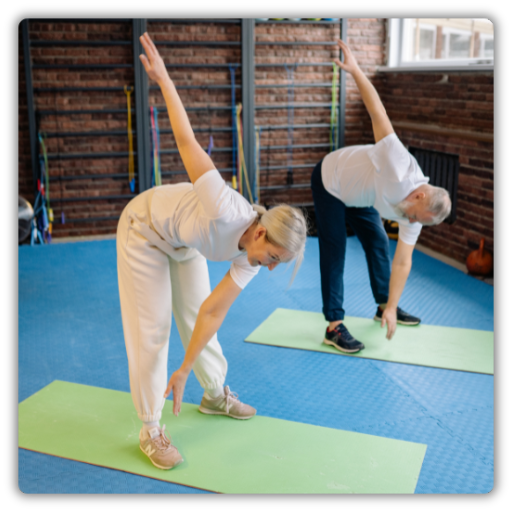
If back pain or tight muscles are holding you back, it’s time to dive into a stretching routine designed to increase flexibility and reduce tension. Stretching exercises aren’t just about feeling good—they help enhance your range of motion, reduce the risk of injuries, and improve your overall health. With these simple flexibility exercises, you’ll feel a nice stretch where it matters most and keep your body moving comfortably, whether it’s a busy day or a relaxed evening at home.
KEY POINTS
Strength training builds muscle strength, enhances endurance, and supports bone density, reducing the risk of injuries and chronic conditions like osteoporosis.
It boosts metabolism, improves posture, and promotes better balance, making everyday activities easier and contributing to healthy weight management.
Regular resistance training supports mental well-being by releasing endorphins, boosting mood, and enhancing cognitive function while reducing stress and anxiety.
A well-rounded routine combining body weight, resistance bands, and free weights effectively targets all major muscle groups, improving overall health, functional fitness, and longevity.

Pop in your email below, and we’ll zip it straight to your inbox so you never lose it!
Why Stretching Matters
Stretching isn’t just for athletes or fitness buffs—it’s for anyone who wants to improve flexibility and reduce muscle tension. By focusing on stretches to help loosen areas like your hip flexors, lower back, and calves, you can enhance your posture, prevent stiffness, and even manage low back pain. The key is to keep your back straight, take it slow, and hold each position long enough to feel the stretch without discomfort.
Looking to take control of your weight & nutrition?

Simple Stretching Exercises to Improve Flexibility
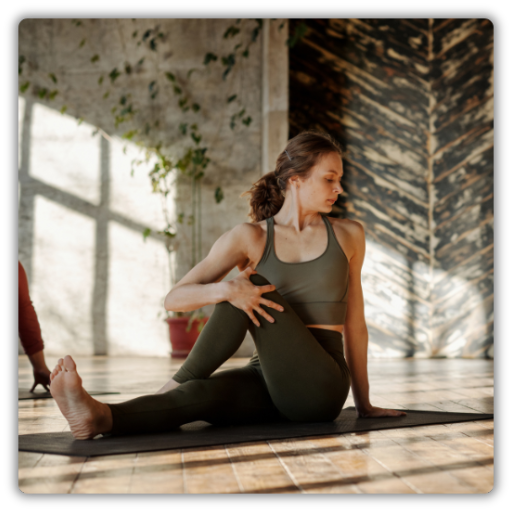
Here are some easy stretches that target key areas of your body, helping you feel a stretch along your back, shoulders, legs, and more.
1. Lower Back Stretch
Great for: Relieving tension and reducing low back pain.
How to Do It: Lie on your back with your knees bent and your feet flat on the floor. Gently pull your right knee toward your chest, keeping your back flat. Hold for 10 seconds and repeat on the other side. Feel a nice stretch in your lower back.
2. Hip Flexor Stretch
Great for: Improving flexibility in the hip flexors and reducing tightness in the thighs.
How to Do It: Kneel on your left knee and place your right foot flat on the floor in front of you. Keep your shoulders back and your upper body straight as you lean forward slightly, feeling a stretch along the front of your left thigh. Hold for 10 seconds and repeat on the other side.
3. Neck Stretch
Great for: Easing tension in the shoulders and neck, improving range of motion.
How to Do It: Sit or stand tall, keeping your shoulders relaxed. Place your right hand gently on the left side of your head and pull your head toward your right shoulder until you feel a stretch on the inside of your neck. Hold for 10 seconds, then switch sides.
4. Calf Stretch
Great for: Loosening tight calves and improving ankle flexibility.
How to Do It: Stand facing a wall, placing your hands against it for support. Step one leg back, keeping your heel on the floor and your back leg straight. Bend your front knee and press gently toward the wall until you feel a stretch in your back leg’s calf. Hold for 10 seconds and repeat on the other side.
5. Spinal Twist
Great for: Stretching the back and sides of your body while improving flexibility.
How to Do It: Sit flat on the floor with your left leg extended. Bend your right knee and place your right foot flat on the floor outside your left thigh. Place your right hand behind you for support and your left hand on your right knee. Twist your upper body to one side, keeping your back straight, and feel a stretch along your back and the side of your body. Hold for 10 seconds and repeat on the other side.
Tips for a Safe Stretching Routine
- Warm up first: A quick walk or light activity can help your body get ready for stretching.
- Focus on form: Keep your shoulders back, your back straight, and avoid forcing any stretch.
- Hold, don’t bounce: Static stretches are more effective and safer than bouncing movements.
- Consistency is key: Make this routine a habit to truly improve your flexibility and reduce muscle tension.
With these stretching exercises, you can feel a stretch in all the right places while improving your flexibility and reducing discomfort. Whether you’re dealing with low back pain, tight hip flexors, or stiff calves, these simple movements can help you feel better and move more freely. Grab a mat, carve out a few minutes a day, and let stretching improve your health, one gentle move at a time.
What Are the Benefits of Stretching Exercises?
How Does Stretching Help with Muscle Recovery?
Stretching is essential for muscle recovery as it helps alleviate pain and prevent injuries. For instance, while lying on the floor, place your left foot on your right thigh, then bend your left knee and reach back with your right arm across your body, keeping your right elbow straight.
This position allows you to feel the stretch along your right hip and shoulder blades. Maintain this starting position for 10 to 30 seconds, then slowly turn your head toward the floor and bring your head back to a neutral position.
To enhance the stretch, flatten your back and keep your knees in a straight line. You can also bend your left leg at the knee, ensuring your right heel remains on the floor. This practice effectively promotes flexibility and aids in recovery.
Can Stretching Prevent Injuries?
Can stretching help prevent injuries? To start, place your left hand on a wall and extend your left arm upward, reaching toward the ceiling. Keep your right leg straight and bend your back knee slightly to stretch in your calf.
Hold this position for 30 seconds, then switch sides, repeating 2 to 4 times. Gently pull your head onto the back while keeping your left hip aligned. This will effectively stretch along the back and help maintain flexibility, potentially reducing injury risk.
How to Use Stretching Exercises to Improve Your Flexibility?
To improve your flexibility, start by standing with your right leg positioned forward. Place your left hand on your left hip and gently pull your head toward the ceiling while you extend your left arm along the back. Keep your back knee straight and stretch in your calf.
Next, lean closer to the wall, maintaining a gentle stretch for 30 seconds before switching legs. Repeat this routine 2 to 4 times, ensuring that you stretch for 30 seconds on each side. This will help lengthen your muscles and improve overall flexibility.
Looking for a quick and effective way to improve flexibility? Check out this 5-minute daily stretch for a full-body routine that supports better mobility and overall health.



